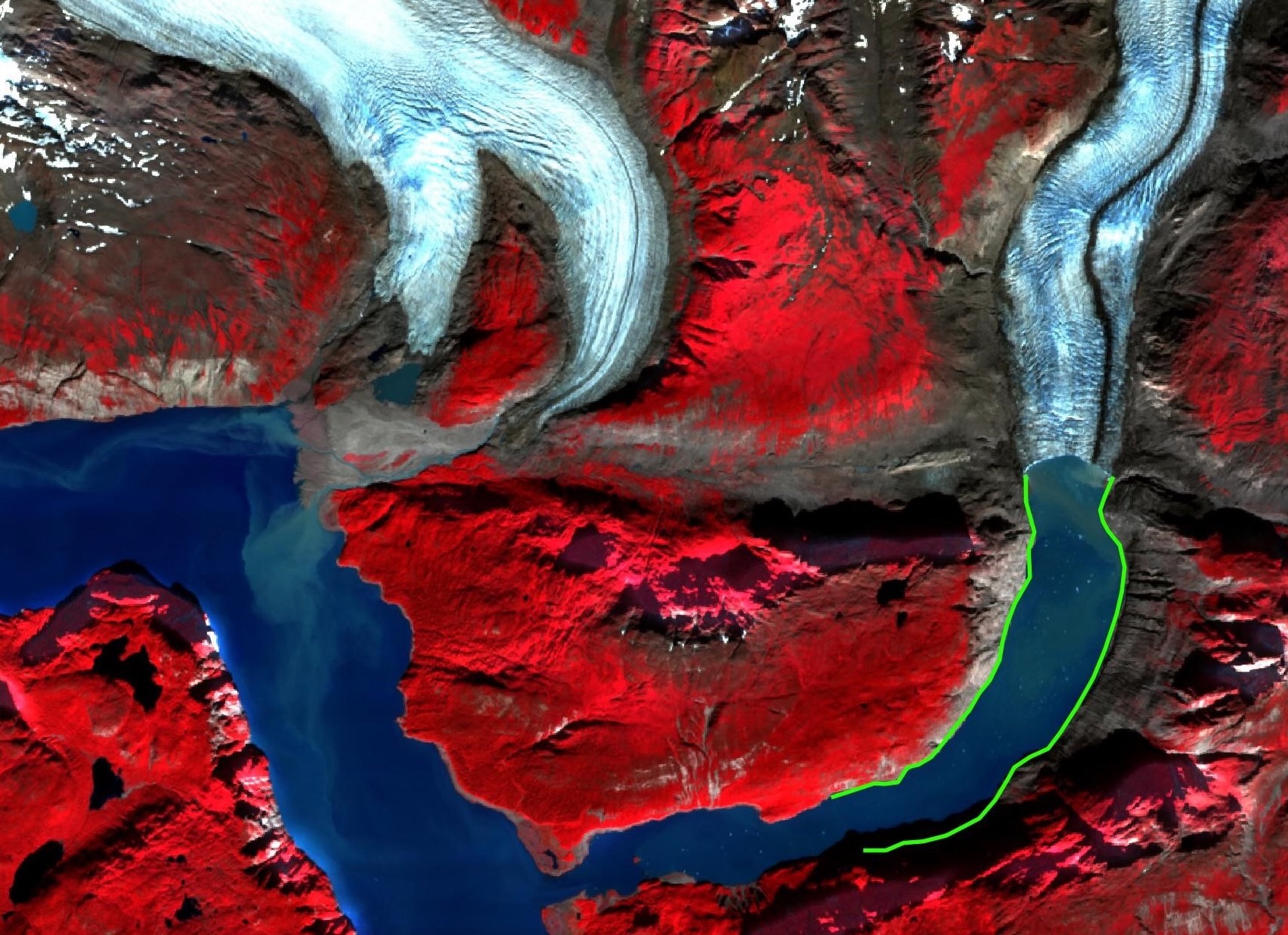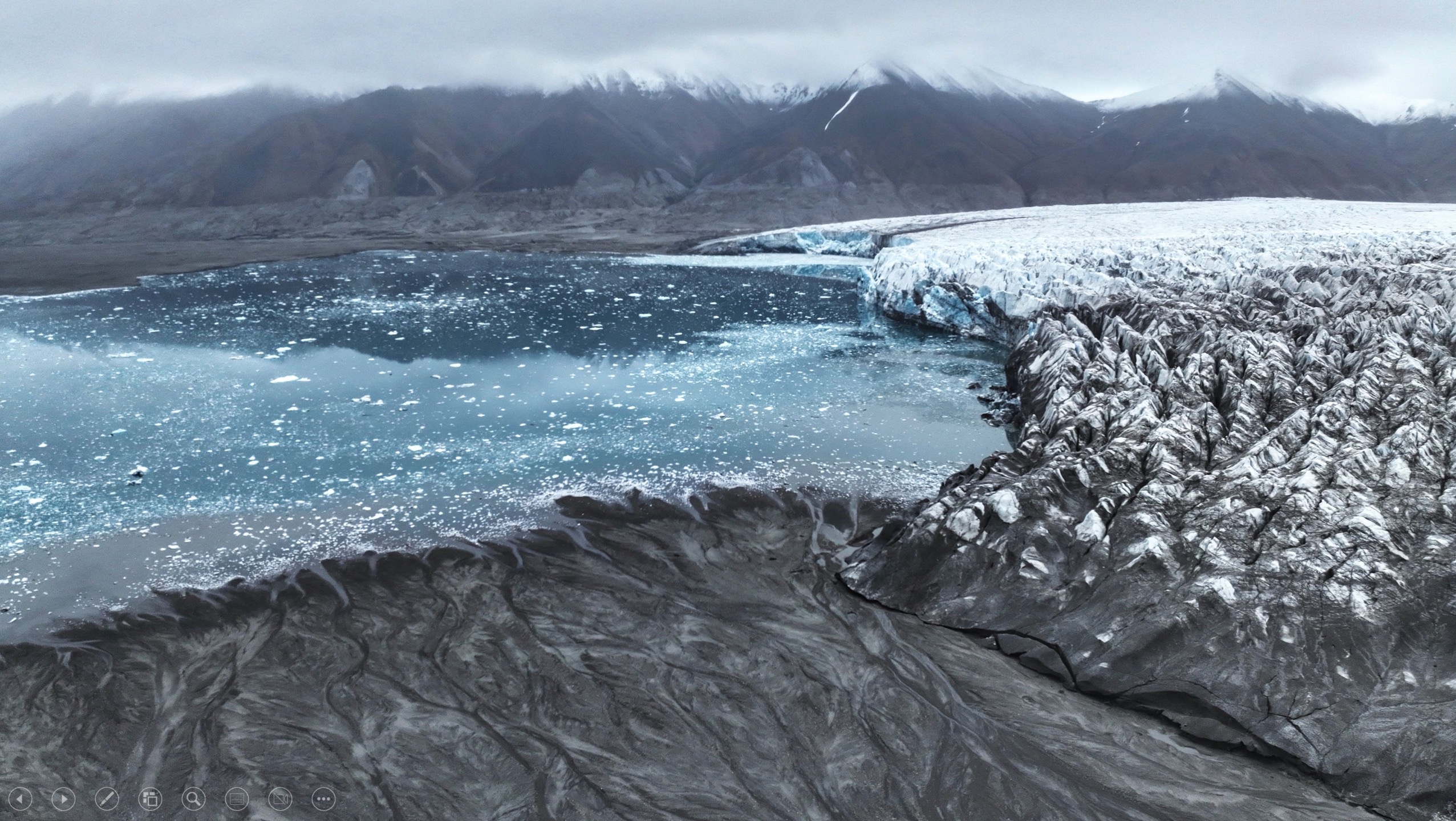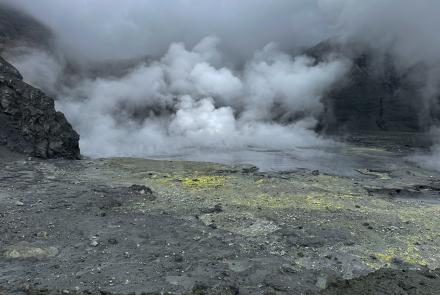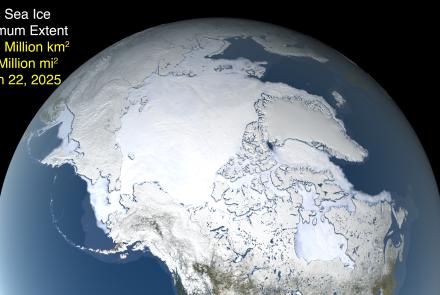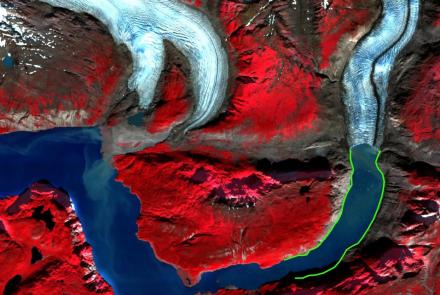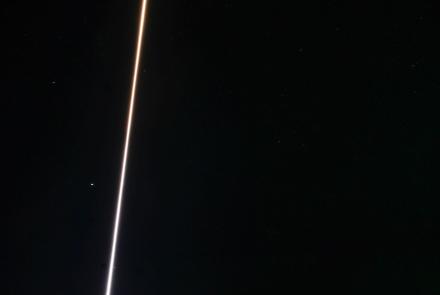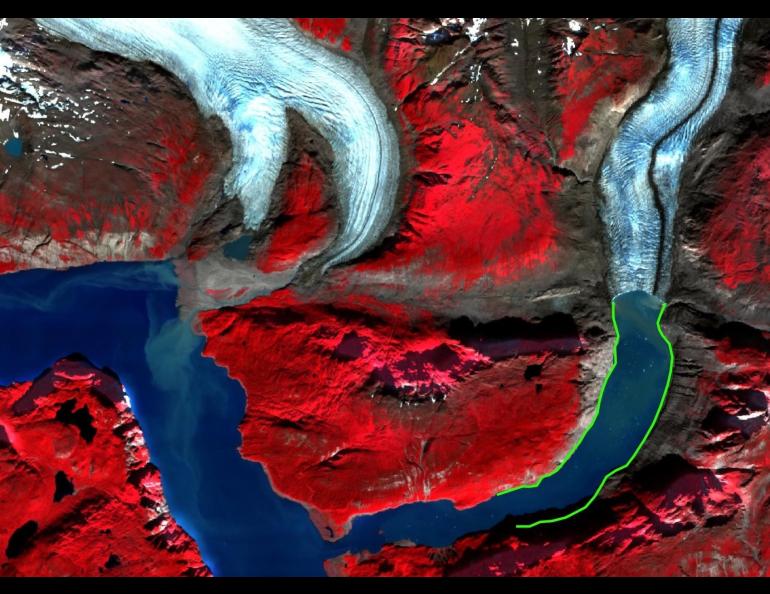
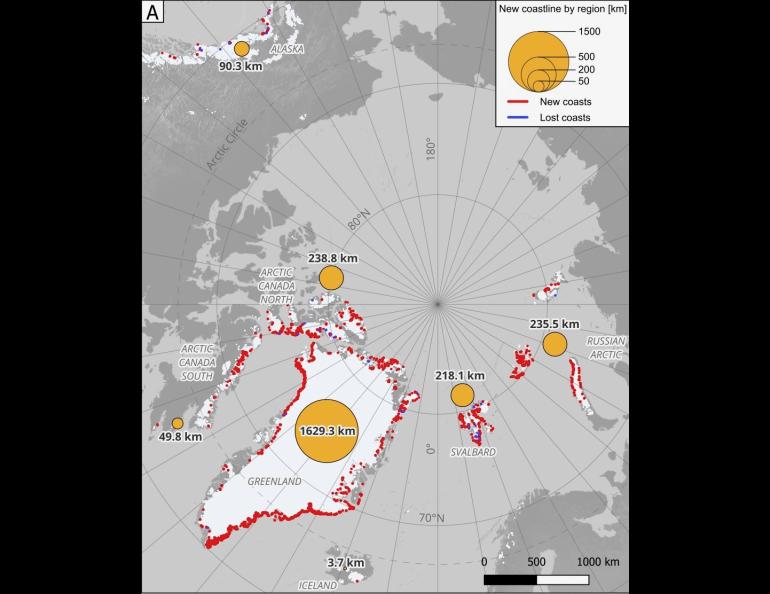
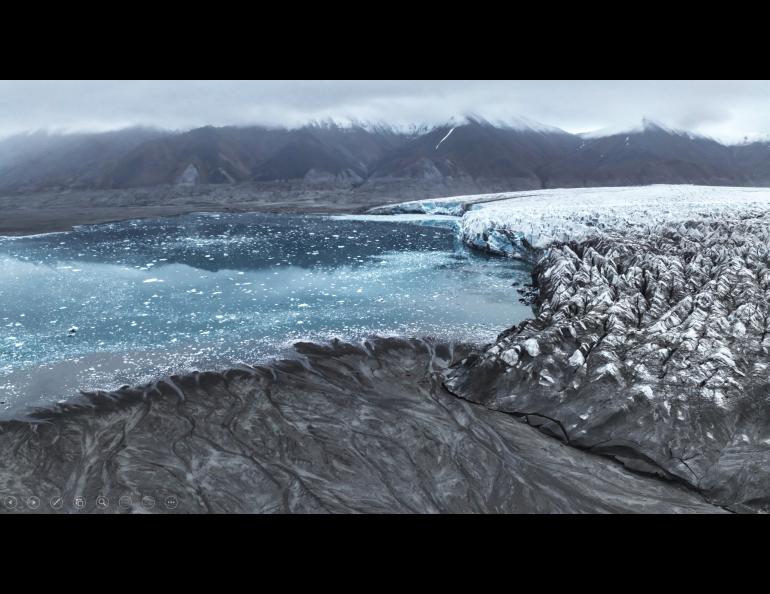
New assessment shows gain of coastline from receding glaciers
New research gives a detailed look at the extent to which receding glaciers in Alaska and elsewhere in the Northern Hemisphere are creating new coastline and how that newly exposed terrain is behaving.
The work was led by Jan Kavan of the University of South Bohemia in Czechia. The five co-authors include research assistant professor Louise Farquharson of the University of Alaska Fairbanks Geophysical Institute.
“Receding glaciers are creating extensive sections of new coastline and islands across the Arctic,” Farquharson said. “How permafrost is forming in areas that are cold enough is poorly understood, as well as the interaction between areas of new permafrost and the coastal geomorphology.”
The researchers studied marine-terminating glaciers across the Northern Hemisphere to determine the length of new coastline exposed by glacial retreat from 2000 to 2020. Findings were published March 21 in Nature Climate Change.
The team found 1,530 miles of new coastline, with two-thirds of that occurring in Greenland, the largest Arctic region and the region with the greatest extent of glacier coverage.
The northern Canadian Arctic, Russian Arctic and Svalbard each had 135 to 150 miles of new coastline, together accounting for nearly 30% of the total. The remaining portion was found in Alaska, the southern Canadian Arctic and Iceland.
Alaska gained several miles of coastline, with the retreat of McBride Glacier in Southeast Alaska accounting for 5.25 miles of the total.
“The glaciers in Alaska are mostly in narrow, steep fjords, so even a small area loss means a long retreat and therefore a long stretch of new coastline,” Kavan said.
Greenland has the most glacier acreage but doesn’t produce the most coastline per acre of ice lost, the researchers also found, due to the geometry of the tidal glaciers there. After adjusting data for a correct comparison, the researchers found that Alaska and Arctic Canada South, a region that includes Baffin Island, are the most effective regions in forming new coastline.
The researchers found that the most dramatic retreat and new coast emergence resulted from the collapse of ice shelves or the floating portion of a marine-terminating glacier. They determined that the ratio of new coastline to glacier retreat area is tightly connected to local topography. A glacier that extends into the open sea could experience extensive retreat without any new coastline formation, the authors note.
New coastline can present hazards.
“The newly deglaciated coastal zones are prone to slope destabilization and resulting landslides and rockfalls with consequent tsunami waves,” Kavan said. “These waves can destroy infrastructure and threaten onshore settlements.”
Farquharson, a permafrost expert, noted that the formation, presence or absence of permafrost in newly exposed coastline is a critical influence on coastal landforms and erodibility.
Kavan noted that the new coastline detailed in the research affects only a small number of communities but that the occurrence is significant when considered in a global climate context.
“The Arctic and its cryosphere is a key component of the global climate system, which in the end affects all of us,” he said. “Understanding the behavior of the Arctic glaciers can help us to better predict future climate development and help us to prepare how to face the consequences of climate change.”
• Louise Farquharson, University of Alaska Fairbanks Geophysical Institute, 907-474-5623, lmfarquharson@alaska.edu
• Jan Kavan, University of South Bohemia, kavan@prf.jcu.cz
• Rod Boyce, University of Alaska Fairbanks Geophysical Institute, 907-474-7185, rcboyce@alaska.edu

